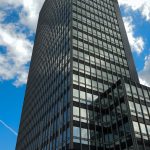Assessing the structural soundness of pre-1950 properties in London is vital for homeowners, investors, and preservationists alike. This essential guide outlines key indicators of potential issues, including material integrity, foundation stability, and roof conditions. Unearth the unique challenges these historic buildings face and explore practical solutions to ensure safety and longevity. With expert insights, readers will gain the confidence needed to navigate the intricacies of assessing these charming yet complex properties.
Overview of Pre-1950 Properties in London
Pre-1950 properties in London offer a fascinating glimpse into the city's rich architectural history. These historical properties are often characterised by their unique design elements and craftsmanship, which reflect the architectural trends of their time. Common materials used in the construction of these buildings include brick, stone, and timber, which were selected for their durability and availability.
En parallèle : Essential Steps to Establish a Sustainable Green Lease for Commercial Properties in Birmingham
The structural integrity of these properties is a testimony to the skill of the builders and the quality of materials used. However, it's essential to understand that maintaining these buildings can be challenging due to their age and the wear and tear over decades. Regular inspections are crucial to preserve their historical value and ensure safety.
Understanding the historical context of these properties is vital for anyone interested in London architecture. It provides insight into the evolution of building styles and the socio-economic factors that influenced construction methods. This knowledge not only enhances appreciation for these architectural gems but also informs renovation and preservation efforts, ensuring that the charm and character of London's pre-1950 properties are maintained for future generations.
Lire également : Effective Strategies to Reduce Noise Pollution in UK Residential Areas Near Airports
Methods for Assessing Structural Soundness
Evaluating the structural soundness of pre-1950 properties in London requires a combination of traditional and modern inspection techniques. A thorough visual inspection is often the first step. This involves examining the building for visible signs of wear, such as cracks, dampness, or sagging, which can indicate underlying issues.
Advancements in technology have significantly enhanced structural assessment processes. For instance, drones are increasingly used to inspect hard-to-reach areas, providing detailed aerial views without the need for scaffolding. Thermal imaging is another valuable tool, allowing inspectors to detect moisture and insulation problems that aren't visible to the naked eye.
Documentation plays a crucial role during these inspections. Detailed records of findings, including photographs and notes, help in tracking the condition of the property over time. This comprehensive documentation is essential for planning any necessary repairs or renovations, ensuring that the historical integrity of the building is preserved while maintaining safety standards.
By combining traditional techniques with modern technology, inspectors can provide a more accurate and thorough evaluation of a property's structural condition, safeguarding these architectural treasures for future generations.
Key Structural Features to Inspect
Evaluating the structural features of pre-1950 properties in London is crucial for ensuring their longevity and safety. Understanding common issues and signs of deterioration can aid in a comprehensive property evaluation.
Foundations
The foundations of these historical buildings are often made from brick or stone, materials known for their durability. However, over time, they may suffer from subsidence or cracking. Regular inspections can help identify these issues early, preventing further damage.
Roof and Attic Structures
The roof and attic structures are vital to a building's integrity. Common issues include missing tiles, leaks, or rot in wooden beams. Regular maintenance, including checking for water damage or pest infestations, is essential to preserve these areas.
Walls and Load-Bearing Elements
The walls and load-bearing elements of pre-1950 properties are typically constructed from solid brick or stone. Look for signs of deterioration such as bulging, cracks, or damp patches. Addressing these issues promptly can prevent serious structural problems.
By focusing on these key areas, property owners can maintain the historical charm and structural soundness of their buildings, ensuring they remain safe and beautiful for future generations.
Historical Construction Practices and Their Implications
Understanding historical practices in London’s construction is vital for assessing and preserving pre-1950 properties. Back then, building regulations were less stringent, allowing for greater architectural creativity. However, this also means that many buildings lack the standardisation seen today. This absence of uniformity can complicate current assessments, as each property may have unique structural challenges.
Building regulations of the past often focused more on fire safety and less on structural integrity. Consequently, materials like timber were frequently used, which, although durable, require careful inspection for rot or pest damage today. These historical practices necessitate tailored restoration techniques to maintain the building's original charm while ensuring safety.
When it comes to restoration techniques, best practices include using materials that match the original as closely as possible. This not only preserves the aesthetic but also ensures compatibility with existing structures. Modern technology can aid in this process, allowing for precise assessments and repairs. By understanding and respecting these historical construction practices, we can effectively renovate and restore these architectural treasures, preserving their historical value for future generations.
Hiring Professionals for Structural Assessments
When considering professional assessments for pre-1950 properties, selecting the right experts is crucial. Hiring experts ensures a thorough evaluation, safeguarding both the historical and structural integrity of your property.
Criteria for Selecting Qualified Structural Engineers or Inspectors
To ensure you hire the best, verify the qualifications and certifications of potential candidates. Look for engineers or inspectors with experience in historical properties. Professional affiliations with recognised bodies can also indicate credibility and expertise.
Questions to Ask During Interviews or Consultations
During consultations, ask about their experience with similar property evaluation services. Inquire about their approach to addressing specific issues common in older buildings, such as dampness or foundation subsidence. Understanding their methodology can give insight into their expertise.
Understanding the Costs Associated with Professional Assessments
Costs for professional assessments can vary widely. It's important to request detailed quotes that outline the scope of work, including any potential additional fees. While upfront costs may seem high, investing in a comprehensive assessment can prevent costly repairs in the future.
By carefully selecting and engaging the right professionals, property owners can ensure a precise evaluation, maintaining the historical charm and safety of their valuable assets.






